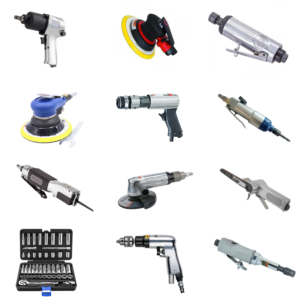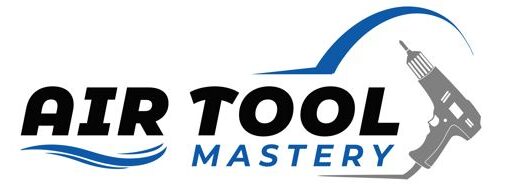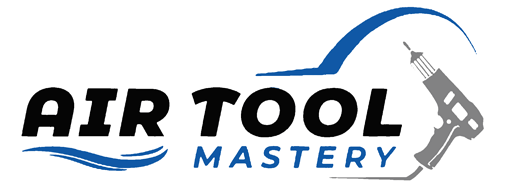Pneumatic tools, widely known as air tools, are power-driven gadgets that operate using compressed air as an energy source. These robust and versatile tools have dramatically transformed various industries, ranging from manufacturing and construction to automotive repair and DIY tasks at home.
Their reliable performance, ease of use, and high power-to-weight ratio continue to make them a popular choice across a variety of applications. Today, we explore the vast world of pneumatic tools, tracing their historical development, explaining their working principles, and exploring the diverse array of types available on the market today.
What Are Pneumatic Tools?
Pneumatic tools are devices that use compressed air to perform mechanical work. They convert potential energy from compressed air into kinetic energy to drive the tool’s mechanism, enabling it to perform various tasks such as drilling, grinding, cutting, and polishing.
How Pneumatic Tools Work: A Detailed Breakdown
The working principle of pneumatic tools is fundamentally based on the concept of fluid dynamics, whereby compressed air is used to generate mechanical force. Here’s a step-by-step breakdown of the process:
Compressed Air Generation
Initially, an air compressor is used to generate compressed air. This compressor works by pulling in ambient air and reducing its volume while simultaneously increasing its pressure. This compressed air is then stored in a holding tank, ready to be used by the pneumatic tool.
Air Transportation
When the pneumatic tool is activated, the compressed air from the holding tank is transported to the tool via an air hose.
Conversion to Kinetic Energy
The pneumatic tool features a design where the incoming compressed air hits a turbine or a rotor. The pressure exerted by the air propels this turbine, converting the potential energy of the pressurized air into kinetic energy.
Mechanical Operation
The rotor or turbine is connected to the tool’s mechanical component via a drive shaft. As the turbine spins, it drives the mechanical component of the tool, enabling it to perform its desired function, be it drilling, hammering, or cutting.
Exhaust
Once the compressed air has performed its function, it is released from the tool as exhaust air into the environment.

Common Pneumatic Tools
1. Air Drills
Pneumatic drills (also known as air drills) use compressed air to power their rotary motion, making them ideal for drilling through tough materials such as concrete or metal. They are commonly used in construction and mining projects.
2. Air Hammers
Air hammers utilize the force of compressed air to deliver powerful strikes on surfaces. They are often used for heavy-duty tasks such as breaking up concrete or driving posts into the ground.
3. Sanders and Grinders
Pneumatic sanders and grinders use compressed air to power their abrasive heads, making them efficient and powerful tools for sanding, grinding, and polishing surfaces. They are commonly used in the woodworking and metalworking industries.
4. Wrenches
Pneumatic wrenches (also known as impact wrenches) use compressed air to provide high torque output, making them popular among mechanics for tasks such as changing tires or removing bolts.
5. Nail Guns
Pneumatic nail guns use compressed air to drive nails into various materials, making them a popular choice in the construction and woodworking industries.
6. Paint Sprayers
Pneumatic paint sprayers use compressed air to atomize the paint, creating a fine mist that evenly coats surfaces. They are commonly used in automotive and furniture painting.
7. Air Ratchets
Similar to pneumatic wrenches, air ratchets also use compressed air to deliver high torque output but with a more compact design, making them suitable for tight spaces.
8. Air Screwdrivers
Pneumatic screwdrivers use compressed air to rotate the screwdriver bit, making them efficient tools for tasks such as assembly line work or furniture building.
9. Airbrushes
Airbrushes use compressed air to spray a fine mist of paint or other materials onto surfaces, making them popular tools for artists and illustrators.
10. Jackhammers
Jackhammers utilize the force of compressed air to deliver powerful strikes on surfaces, making them ideal for breaking up concrete or asphalt in construction and demolition projects.
What tools are pneumatic tools?
Pneumatic tools, also known as air tools, are powered by compressed air supplied by an air compressor. This category includes a wide variety of tools used across numerous industries, from construction and woodworking to automotive repair.
Common examples include air hammers, drills, wrenches, and paint sprayers. These tools are favored for their high power-to-weight ratio, durability, and not generating electrical sparks, making them ideal for use in volatile environments where a spark could be disastrous.
What are pneumatic tools and their functions?
Pneumatic tools serve a broad range of functions, depending on the type of tool and the industry it is used in. For instance, pneumatic hammers are crucial for demolition tasks and breaking through materials such as concrete and asphalt, making them indispensable in construction and roadway work. Pneumatic drills offer the precision and power needed for creating holes in hard materials quickly and efficiently, a common need in both construction and manufacturing.
Wrenches powered by air compress have a high torque output for loosening or tightening bolts and nuts, essential in automotive repair to ensure vehicles are assembled securely. Lastly, paint sprayers utilize compressed air to evenly distribute paint over surfaces, speeding up the painting process and achieving a smooth, even coat that would be challenging to accomplish with a brush or roller. Each of these tools exemplifies the versatility and efficiency of pneumatic technology in professional settings.
Which of these is an example of a pneumatic tool?
Air hammers, wrenches, and paint sprayers stand out as prime examples of pneumatic tools. These devices harness the power of compressed air to perform a variety of tasks with precision and efficiency. For example, air hammers are utilized extensively in construction and renovation projects to break through surfaces and materials that would otherwise require significant manual effort.
Conversely, pneumatic wrenches offer an unmatched level of torque, making them indispensable in the automotive industry for ensuring components are securely fastened. Paint sprayers, on the other hand, provide a level of coverage and finish that is difficult to achieve with traditional painting methods. This broad usability across different fields illustrates the indispensable nature of pneumatic tools in professional environments.
What is the difference between pneumatic and power tools?
The principal distinction between pneumatic tools and traditional power tools lies in their source of power. Pneumatic tools operate using compressed air, provided by an air compressor, to function. This design allows for a lightweight tool that can deliver significant power and is ideal for continuous use over prolonged periods without overheating.
In contrast, power tools typically run on electricity, either through a direct connection to an electrical outlet or via a battery. While electric tools offer convenience and portability, especially in locations without easy access to an air compressor, they may not match the power output or durability of their pneumatic counterparts.
What are five examples of pneumatic devices?
Air Brakes: Used primarily in buses and large trucks, air brakes utilize compressed air to create a powerful braking force, significantly improving the safety and efficiency of large vehicle operations.
Pneumatic Cylinders: These devices, also known as air cylinders, are used in industrial automation processes. They convert compressed air into mechanical energy to move loads, push or pull objects, and control motions within machinery.
Air Compressors: Essential for generating the compressed air needed by pneumatic tools and devices, air compressors are found in various settings, from industrial facilities to personal workshops.
Pneumatic Actuators: Employed widely in the automation and robotics fields, pneumatic actuators provide the necessary force and movement for valves and other controlled devices, operating with both speed and precision.
Vacuum Pumps: Though typically recognized for creating vacuums, these devices operate on pneumatic principles. They’re crucial in applications ranging from packaging to medical devices, where creating a vacuum is necessary for the process or equipment to function correctly.
What is the most common pneumatic tool?
One of the most commonly used pneumatic tools is the pneumatic drill, often referred to as a jackhammer. This powerful tool is a staple in construction and demolition projects, harnessing compressed air to drive its drill bit through concrete, asphalt, and other hard materials with ease. The pneumatic drill’s efficiency and strength make it an indispensable tool for breaking up foundations, roads, and other structures, enabling workers to complete their tasks more quickly and with less physical strain compared to manual methods.
Types of Pneumatic Tools [Classification By Functions]
Air tools can be put to work in very many applications due to their versatility and various features that can be tailored for specific tasks. They are classified into the following categories based on their functions:
1. Cutting Tools
As their names suggest, these are air-powered tools designed for cutting through different materials such as metals, wood, and plastic. Examples include pneumatic saws, grinders, shears, and drills. For these tools, compressed air is used to drive a tool whose function is to cut whatever material its sharp end comes into contact with.
2. Fastening Tools
For tasks that require driving in screws, bolts, or nails, fastening tools are the go-to option. These pneumatic tools typically use a reciprocating motion to drive and insert fasteners into different materials. Examples of fastening tools include nail guns, staplers, and screwdrivers.
3. Sanding/Polishing Tools
Pneumatic sanders and polishers are used for smoothing and finishing surfaces of various materials such as wood, metal, or plastic. The compressed air powers a motorized pad that oscillates back and forth on the surface being sanded or polished.
4. Hammering/Impact Tools
These types of pneumatic tools use compressed air to deliver high-impact blows to a surface, making them ideal for tasks such as breaking up concrete or driving in stakes. They include air hammers, chisels, and impact wrenches.
5. Spraying Tools
Spray guns are commonly used in a wide range of applications, such as painting, staining, and finishing surfaces. Their design allows for adjustable pressure control and spray patterns to achieve different desired finishes.
6. Pumping and Inflating Tools
Finally, there are pneumatic tools specifically designed for pumping or inflating purposes. These include tire inflators, grease guns, and grease free air compressors.
It’s worth noting that some pneumatic tools can perform multiple functions, depending on the attachments or accessories fitted to them. This versatility makes them an essential part of any professional or DIY toolkit.
Conclusion
Pneumatic tools have come a long way since their invention in the 19th century and continue to evolve with advancements in technology. They offer numerous advantages and disadvantages compared to other types of power tools, making them a popular choice for various industries. As technology continues to advance, we can expect further improvements and innovations in pneumatic tool design and functionality. So whether you’re an experienced professional or a DIY enthusiast, keep an eye out for new pneumatic tool developments that could make your work easier and more efficient.

